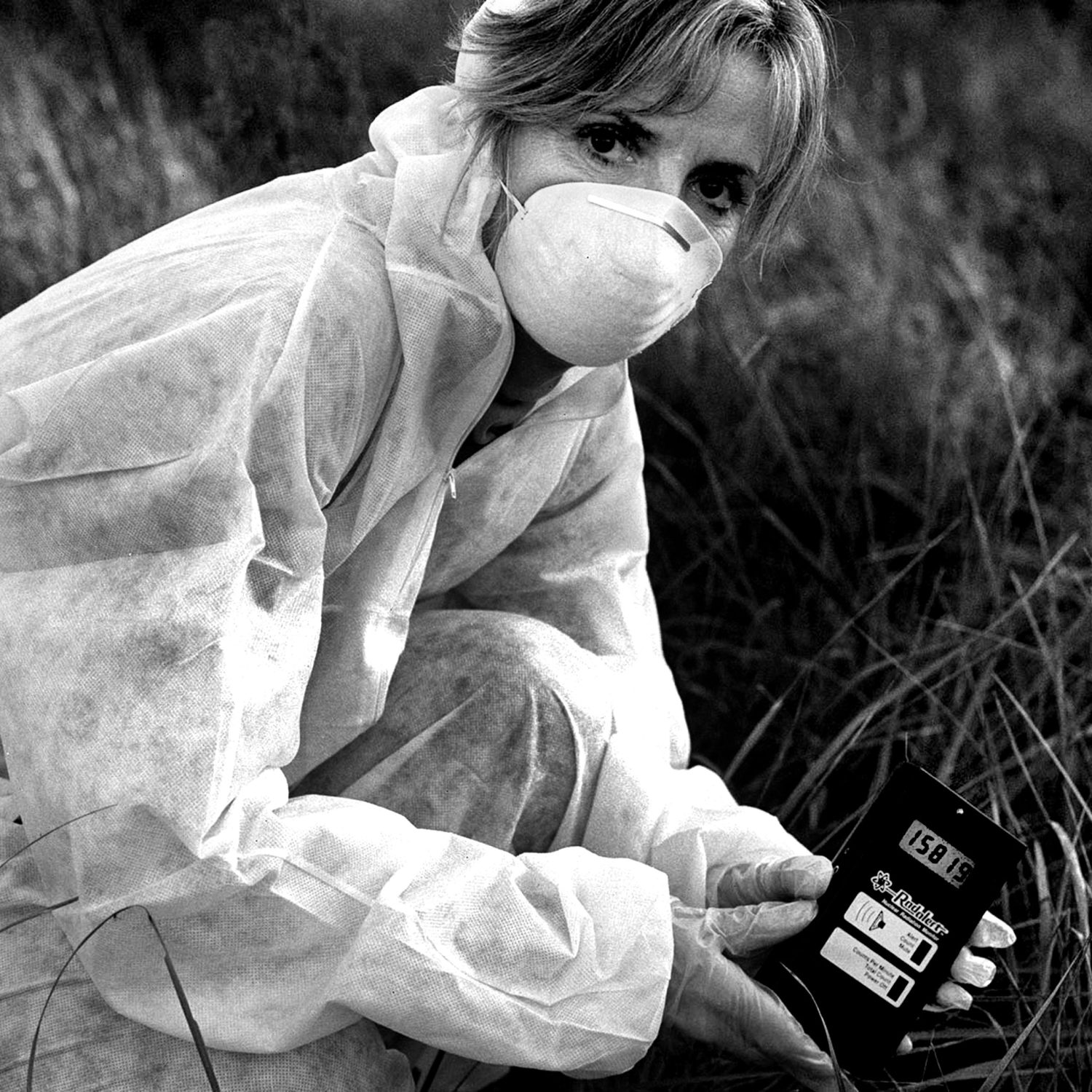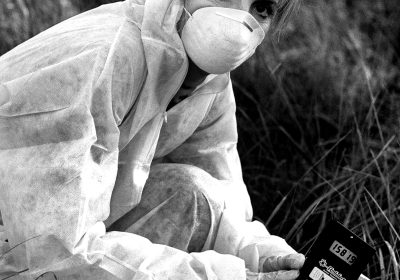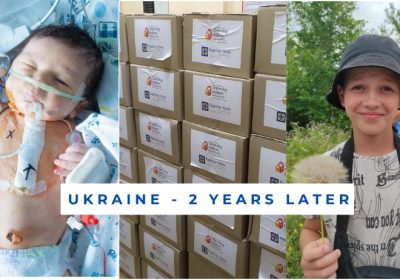This Friday, 26 April, marks ‘United Nations Chernobyl Disaster Remembrance Day’ – a day ratified by the United Nations to remember the victims and survivors of Chernobyl, the worst nuclear accident since the beginning of the nuclear-age.
On that fateful day in 1986, a new word “Chernobyl” entered the history of language, the history of world disasters and the history of the world itself.
Unfortunately, like many disasters, they pass quickly out of sight out of mind…relegated to the past…and for many people Chernobyl is like reading ancient history… But…not so for the victims.
While Chernobyl happened almost 40 years ago, its impact continues to stalk across the generations. It remains locked in the land, water, air and DNA of all life. Chernobyl isn’t something from the past; Chernobyl was ‘forever’, Chernobyl is ‘forever’. The impact of this single shocking nuclear accident launched an invisible war that we cannot see, taste or touch and it can never be undone. Chernobyl’s radioactive footprint is embedded in our world forever, with countless people still being affected by its deadly legacy shadowing into their lives for future generations.
38 years on, the Chernobyl zone remains even more radioactive than previously thought, according to research issued by the American Geophysical Union. The half-life of Caesium 137 that was expelled from Chernobyl was previously thought to be 30 years, but now scientists believe that it will take between 180 – 320 years for caesium to disappear from the local environment.
Chernobyl continues to expose humans, flora and fauna to radioactive lethality especially in, but not restricted to, Ukraine and Belarus. New York Academy of Sciences research has shown that there is no safe level or threshold level of ionising (manmade) radiation. Their research explains that almost one million people died worldwide in the toxic aftermath of Chernobyl, and the greatest burden of disease and death is yet to come – given long latency periods, the increasing concentration of radionuclides in internal organs from food grown in contaminated soil, and damage to the human genome over many generations.
With this different frame of reference of tragedy, there remains realisation that any dose of ionised radiation is an overdose and often puts the burden of proof of radiation related injuries on the victims.
On 24 February 2022, Chernobyl re-entered ‘centre stage’ for all the wrong reasons. News of the Russian invasion of telling us troop movement en route to Kyiv came via the world’s most toxic environment, the dreaded ‘Chernobyl Exclusion Zone’, re-releasing deeply buried toxic radioactive elements, such as Caesium 137, back into the environment. This shocking invasion assault, driving thousands of troops in trucks and war-making paraphernalia, came careening through the Chernobyl Exclusion Zone, signified to the world that the nature of modern warfare had changed forever. A new nuclear threat has been made and a new shocking reality has to be faced.
Emboldened by their cavalier actions at Chernobyl, Russian forces moved onwards to one of the world’s largest nuclear power plants at Zaporizhzhia and in what feels like an ominous deja-vu, the world is once again watching another nuclear power plant in Ukraine with bated breath, in fear of yet another unwinnable war against radiation.
The latest reports from the International Atomic Energy Agency (IAEA) paints an alarming picture of the situation at the Russian occupied Zaporizhzhia Nuclear Power Plant; direct drone attacks, leaking steam generation circuits and safety systems, inadequate staff, and no 2024 maintenance plan. The escalating crisis at Zaporizhzhia is an untenable situation; we are on a knife-edge.
If another nuclear explosion or meltdown happens, by either accident or design, the world would never recover. Humanity and the environment would be scarred forevermore.
Any potential explosion or meltdown at Zaporizhzhia, or any of the Ukrainian Nuclear Plants, would cause irreversible damage to the environment and human life, that will last for thousands of years. The Uranium 235 housed within the susceptible Zaporizhzhia plant has a half-life of more than 700 million years, which would change the world forever if expelled from the reactors. There would be no opportunity to evacuate the warzone surrounding the nuclear power plant if a nuclear accident occurs. We neglect Ukraine at our peril.
The intensifying nuclear threat in Ukraine is an inconvenient truth, but one we must not shy away from…and by denying the realities, we are only doing a disservice to future generations.
Every day that peace in Ukraine is denied, we are rolling a dice, with tens of millions of lives on the line. If we allow this to continue, our luck will run out and Zaporizhzhia will become the next Chernobyl…or even worse.
Now, in a nuclear age, a time of grave mortal danger, our very existence on the cusp, a planet that has become so fragile in the hands of man. We cannot overstate the current critical situation and nuclear threat in Ukraine. If we remain silent, we are playing with a loaded gun and risk a humanitarian Armageddon.
The weaponising of nuclear power facilities which began at Chernobyl and continued onwards to Zaporizhzhia, directly violates the Hague Convention, which defines any attack on a nuclear facility to be a ‘war crime’, bringing with it a sense of foreboding for wars of the future. Ukraine is sitting on a nuclear powder keg, and we must wake up to this reality.
The accident at Chernobyl happened as a result of faults in the technology and human error. However, if a nuclear accident happens at Zaporizhzhia, it could very well be intentional. We must pay attention to keeping weapons and materials of mass destruction, in this case nuclear weapons-grade materials such as uranium and plutonium, out of the hands of terrorists and rogue nations.
The people of Ireland are intrinsically linked to the victims of Chernobyl. Neither the pandemic nor the war could stop our work, or sever the umbilical chord that ties us to the people of Belarus and Ukraine.
I plea with the Irish Government to scale up diplomatic initiatives so we can avoid any nuclear conflagration. Our neutrality is our greatest asset, let us use that strength to call on World Leaders to invoke the Hague Convention, which defines occupation of nuclear facilities as a ‘war-crime’ and call for an immediate cease-fire in Ukraine.
Let us be the advocates for peace, so that the people of Zaporizhzhia and beyond do not follow the same devastating fate as the people of Chernobyl. Let us use our collective voice to call for peace and give our brothers and sisters in Ukraine hope in knowing that they are not alone.
If a risk is unavoidable, then that risk should be unacceptable. If we do nothing, then the worst is yet to come. We must do everything in our power to prevent Zaporizhzhia from becoming the next ‘Chernobyl’.
Our children and grandchildren will thank us.








